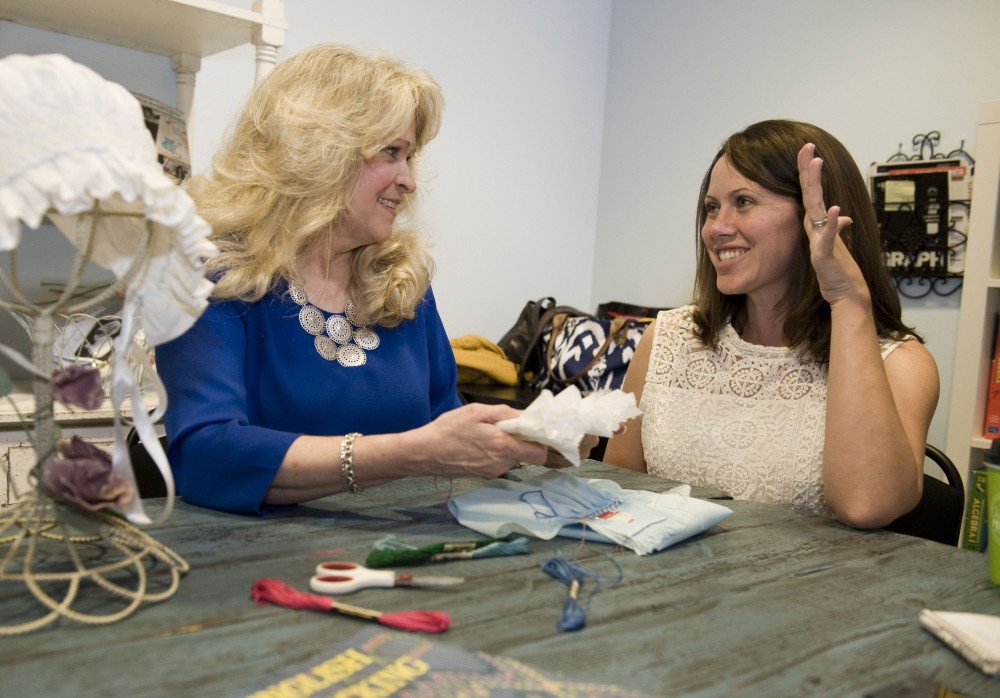By Lily Leung
The Orange County Register.
Becky Pierce, owner of the Smocking Birds Baby and Children’s Boutique, can’t resist giving out homework to her customers.
From her storefront in Costa Mesa, Calif., the longtime teacher offers Saturday classes on “smocking”, an embroidery technique that Pierce learned in the 1980s, which now serves as the boutique’s theme.
Students learn basic stitches on a bonnet during the first of the course’s two parts.
They take home projects to practice and return the following week for a critique and to learn more advanced designs, all for $45.
The homework ensures “that they at least understand it without me being there,” said Pierce, who plans to expand the course to young girls this summer.
Pierce, 59, is part of a growing wave of shop owners, ranging from chefs and bakers to yarn sellers, offering classes.
Classes can draw new customers as well as build loyalty among regulars.
The trend reflects the rise of younger do-it-yourselfers inspired by websites like Pinterest, which lets users bookmark inspirational craft projects or recipes, and Etsy, where people can buy and sell mainly handmade wares.
Combined, those sites report 85 million unique users every month.
But coursework gives brick-and-mortar businesses a weapon against online retailers, who can promise the speedy shipping of a scarf but not hands-on instruction on how to knit one.
Kyla Benson, who teaches sewing at Santa Ana (Calif.) College, found Smocking Birds on a routine family outing.
The Costa Mesa mom of two and fan of the DIY culture was so enamored with the store’s offerings, from handmade day gowns to bibs, that she decided to take one of Pierce’s smocking courses.
After two classes, she was hooked on the stitching technique.
“I see a movement in people going back to being more hands-on and creating things,” said Benson, 34.
Rosemary Stoll, owner of Mission Viejo, Calif., yarn retail shop Yarn del Sol, says knitting and crocheting, once pigeonholed as senior-citizen activities, now also attracts women in their 20s and 30s.
Stoll, 57, has seen it in her store, which last fall began to offer craft classes and chances for customers to drop in for project advice.
Courses range from $15 to $60, and materials may cost extra.
Her clients, regardless of age, appreciate the instruction because it helps “preserve the craft for future generations,” she added.
Chef Jenny Ross, 34, has offered chef’s table cooking classes at her flagship restaurant 118 Degrees in Costa Mesa for eight years.
Due to increased demand, she expanded her offerings to her Anaheim, Calif., location last month.
At the Costa Mesa restaurant, small groups of diners get a five-course meal of gourmet “living food”, unprocessed food items that undergo little or no cooking, and learn how to prepare them. The $70 course, once offered quarterly, is now available twice a month because of its popularity, said Ross, a former model.
Ross’ downtown Anaheim classes, also $70, happen monthly.
They follow a different model. Courses there can accommodate more than 100 people at a time and feature a different theme each month. For instance, February’s focus is eating heart-healthy foods.
“If you’ve never been to the restaurant and go to the class, you will suddenly realize the ‘why’ behind everything,” Ross said. “I just created a customer that gets me.”
Ross says classes bring in money for 118 Degrees but make up only 2 percent of her revenue.
Pierce, of Smocking Birds, also says her classes are a “minor” part of her business. Like Ross, she teaches on the side because she likes it.
“It makes my Saturdays fun,” Pierce said. “I enjoy … getting other people excited for smocking. I’ve done it so long.”
Ross says one challenge she encountered with classes was handling faster-than-expected growth.
Courses that normally accommodated 30 people eventually doubled, requiring Ross to buy more food, add more chairs and eventually add more classes.
She got better at planning, squeezed more people into each class and coordinated a second delivery of food on class days.
But operating three restaurants while offering courses also requires an organized team of chefs and managers.
“It has been a learning process,” she said. “When you encounter 60 to 80 people, we have a whole new layer of facilitation.”














































































































































































































































































































































































